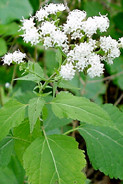 Loading... Please wait...
Loading... Please wait...- Home
- SEEDS
- SEED MIXES
- BUY PLANTS
- Info Request
-
Educational Videos
- Greenhouse Transplanting Demonstration
- Native Seed Cleaning demonstration at Ion Exchange Native Seed and Plant Nursery
- Attracting Butterflies
- Bidens - Bidens cernua Harvest Video
- Big Blue Stem Harvest
- Butterfly Milkweed Video
- Button Blazingstar - Liatris aspera Video
- Buttonbush - Cephalanthus occidentalis Video
- Canada Anemone - Anemone canadensis Harvest Video
- Cardinal Flower - Lobelia cardinalis Video
- Control Burn - Wildflower Field
- Cream Gentian - Gentiana flavida
- Culver's Root - Veronicastrum virginicum Video
- Cup Plant - Silphium perfoliatum Video
- Dormant Seeding | Planting
- Earthyman's Favorite Wildflowers Video
- Eco-Friendly Golf Course Seed Mix
- Floating Islands
- Fringed Loosestrife - Lysimachia ciliata Video
- Giant Yellow Hyssop - Agastache nepetoides Video
- Indiangrass - Sorghastrum nutans Video
- Iowa Prairie Partner Program
- Leadplant - Amorpha canescens (Potted) Video
- Meadow Blazingstar - Liatris ligulistylis
- Midland Shooting Stars - Dodecatheon meadii Video
- Native Plant Nursery Field Irrigation Experiment
- Nodding Onion - Allium cernuum Video
- Ohio spiderwort - Tradescantia ohiensis Video
- Old Man's Beard - Clematis virginiana blooms Video
- Oxeye Sunflower - Heliopsis helianthoides Video
- Prairie Spiderwort - Tradescantia bracteata
- Purple Coneflower - Echinacea purpurea Video
- Rain Garden or Water Garden Video
- Rattlesnake Master - Eryngium yuccifolium Video
- Riverbank Stabilization - Wetland Plants
- Rose Mallow - Hibiscus militaris Video
- Rosinweed - Silphium integrifolium Video
- Royal Catchfly - Silene regia
- Showy Tick Trefoil - Desmodium canadense Video
- Sneezeweed - Helenium autumnale Video
- Swamp Betony - Pedicularis lanceolata Video
- Swamp Milkweed - Asclepias incarnata Video
- Sweet Blackeyed Susan - Rudbeckia subtomentosa Video
- Tall Coreopsis - Coreopsis tripteris Video
- Urban Butterfly Garden
- Wild Bergamot - Monarda fistulosa Video
- Wild Geranium - Geranium maculatum Harvest
- Wild Goldenglow - Rudbeckia lanciniata Video
- Wild Petunia - Ruellia humilis Harvest Video
- Woodland Knotweed - Polygonum virginianum Video
- Yellow Coneflower - Ratibida pinnata Video
- Blog
- Resources
- Policies
Contact Us
Phone:
563-419-0837
or 563-535-7231
Email:
hbright@ionXchange.com
Browse Products
Add to Wish List
You Recently Viewed...
Our Newsletter
Product Description
"White Snakeroot, Deerwort, Poolwort, Rich Weed, Snake Weed, Squaw Weed, White Sanicle"
Greek, from the name of the King of Pontus, Eupator and rugosum from the Latin for "wrinkled", most likely referring to the appearance of the leaves.
Found widely throughout the Tallgrass region in the partial shade and rich soils of rocky woodlands at the base of bluffs or edges of clearings. White flowers on small heads bloom from July to October. Can grow to five feet tall and feels sticky to the touch.
White Snakeroot was the cause of "Milk Sickness" in many parts of the early fronteir. It is thought to have caused more deaths than any other disease of the time. Cows eat the plant, secrete a poison, tremetol, into their milk. The cattle would develop the sickness called "trembles". Abraham Lincoln's Mother died from "Milk Sickness". Large numbers of early pioneers died from this disease and, not knowing the cause, blamed it on "cursed land" and would move elsewhere. The confusion over the cause of "Milk Sickness continued up to the 1900's.
Early settlers would sometimes use the plant to treat urinary disorders and Native Americans used the smoke from the burning plant to revive a person who had fainted. In fact, the Native American term used for White Snakeroot translated into "smoke a person".
| Sun Exposure | Savanna, Woodland |
| Soil Moisture | Wet Mesic, Mesic, Dry Mesic |
| Bloom Time |
Summer, Fall July, August, September, October |
| Bloom Color | White |
| Max Height | 2 feet |
| Wetland Code | UPL |
| Germ Code | C(60),D |
| Seeds Per Packet | 500 |
| Seeds Per Ounce | 150,000 |
Edible Uses: Unknown
Medicinal Uses: The root is diaphoretic, diuretic, febrifuge, stimulant and tonic. It has been used in the treatment of diarrhoea, gravel and urinary diseases. It has also been used in herbal sweat baths to encourage sweating. A decoction or infusion of the root has been taken to treat a fallen or inflamed womb.
Herbal Uses: Unknown












